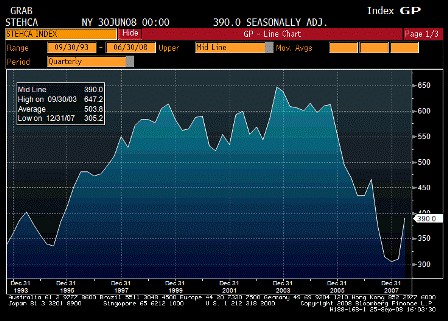Wrong headline, should be ‘California sales turn the corner!’

California Existing Home Sales
California Home Prices Drop Record 41% in August Amid Defaults
by Dan Levy
Sept. 25 (Bloomberg) California home prices tumbled a record 41 percent in August from a year earlier as foreclosure sales pushed down values in the biggest U.S. state.
The median price of an existing, single-family detached home fell to $350,140 and will likely fall further, the Los Angeles-based California Association of Realtors said today in a report. Sales increased 56.7 percent from August 2007 [typo – supposed to be 2008] and 1.8 percent from July.
“While sales appear to have turned the corner, the median will experience additional downward pressure as we move into the off-peak season in the coming months, and will continue to face pressure from distressed sales,” Leslie Appleton-Young, vice president and chief economist of the association, said in a statement.
More than 101,000 California households received a default notice, were warned of a pending auction or foreclosed on last month, RealtyTrac Inc., a seller of default data, said on Sept. 12. That was a third of the nation’s total and represented one in 130 homes in the state.
Eight of the 10 metropolitan areas with the highest foreclosure rates are in California, led by Stockton in first place, according to RealtyTrac. Merced, Modesto, Vallejo-Fairfield and Riverside-San Bernardino ranked second through fifth. Bakersfield, Salinas-Monterey and Sacramento ranked eighth through tenth.
[top]

